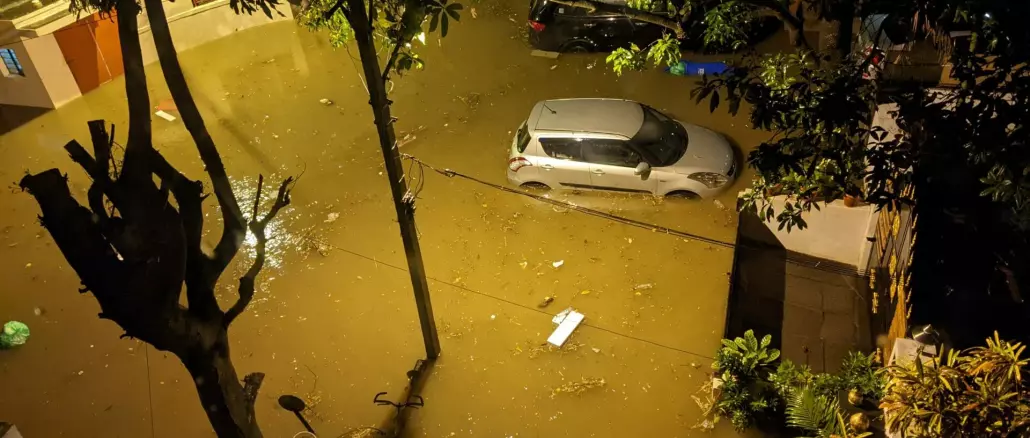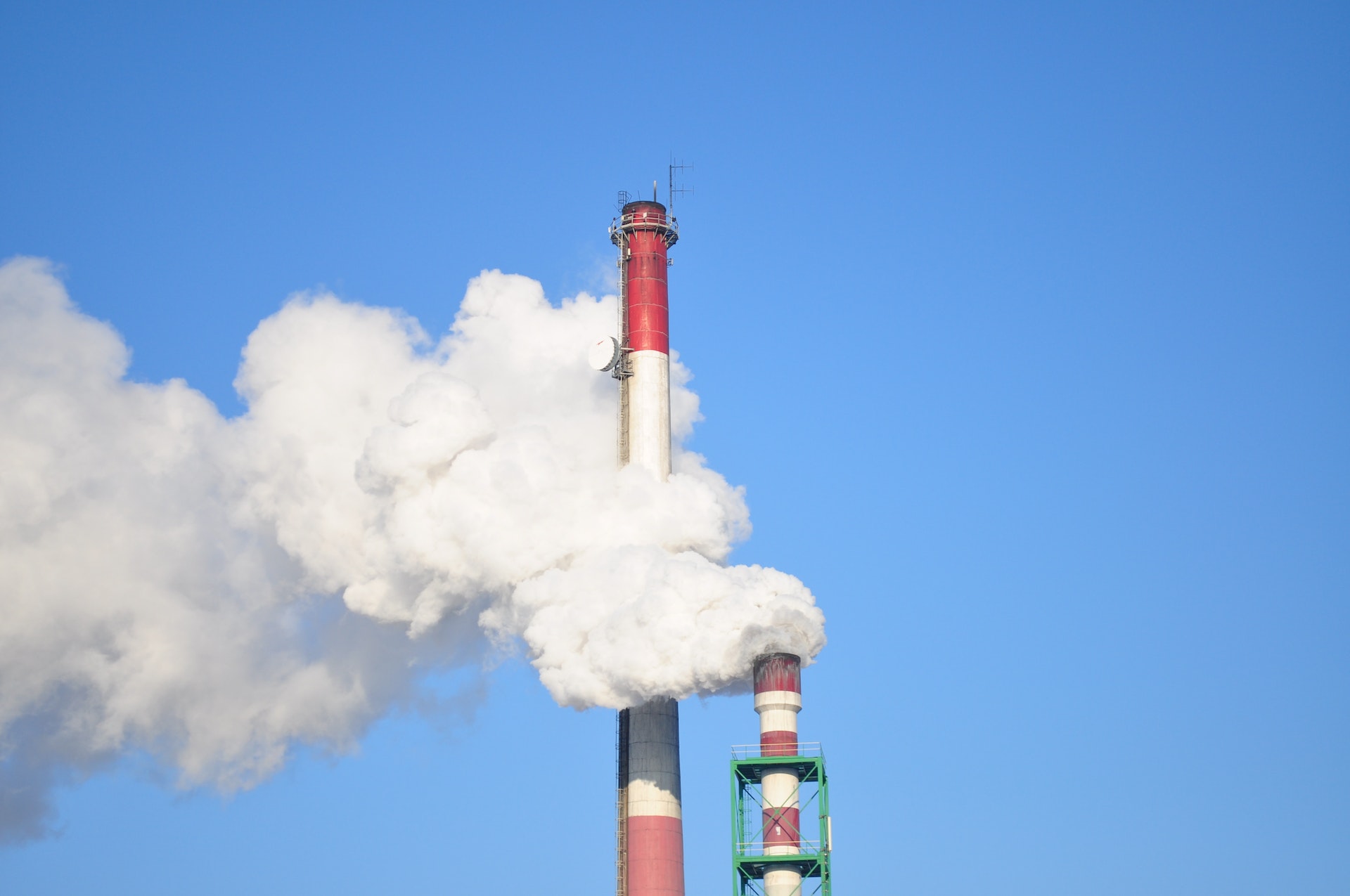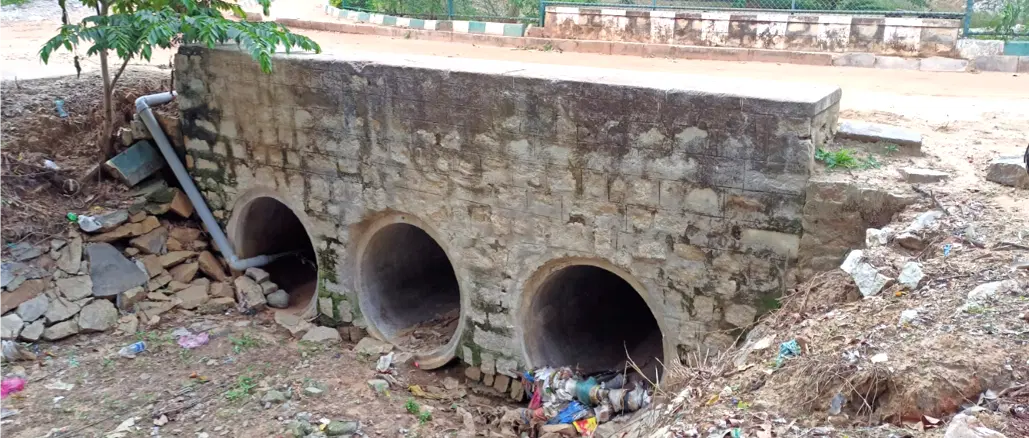Photo credit: Shreya Nath
Kaylea Menon and Anam Husain from the Urban Water programme write about why Manyata Tech Park floods every time it rains, and how collaborative planning, and nature-based solutions can solve this problem.
Routine rains flooding the tech park are a clear call for Bengaluru’s tech giants and real estate groups to rethink urban design.
Manyata Tech Park sits squarely in the Hebbal-Nagavara valley, just below Nagavara and Rachenahalli lakes. Water naturally flows through the tech park to reach downstream lakes like Kalkere. These once-expansive lakes and drains were meant to manage seasonal runoff. Today, however, the city’s drains carry a perennial flow—thanks to both treated and untreated wastewater. As Bengaluru is increasingly paved over with concrete and built surfaces, rainfall no longer seeps into the soil. Instead, it rushes into overloaded drains that lack the capacity to handle it. Simply increasing the size and quantity of the drains will only push the flooding further downstream.
More grey infrastructure is not the solution. Storm water must be captured, stored, and gradually released or infiltrated into the ground. This process, in fact, is what natural systems—streams and lakes—are designed to do. By adopting innovative solutions inspired by nature, Manyata can not only address its flooding issues, but also contribute to groundwater recharge in an area already suffering from depletion.
Acknowledgements
Kaylea Menon, Anam Husain for Deccan Herald
Follow us to stay updated about our work





